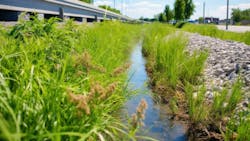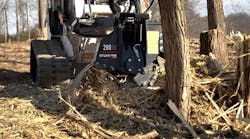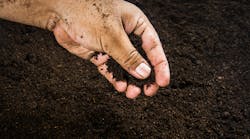Vegetated swales — also known as bioswales — reduce runoff, but they only work well when properly designed. Those overseeing vegetated swale design must consider a wide variety of factors. That’s particularly true when making roadside swales to reduce runoff. The contaminants in the runoff can eventually end up in groundwater, becoming a significant pollutant.
However, a well-designed vegetated swale collects runoff and moves it away from solid surfaces so the liquid can soak into the ground. This effect prevents flooding, offering a particularly important benefit, given that so many parts of the world are experiencing more severe storms due to climate change.
Choose appropriate vegetation
People overseeing such projects must start by selecting the vegetation, prioritizing native options that tolerate drought, water, moisture and salt and can aid with pollutant removal.
Some designers create roadside swales that double as wildlife habitats, such as by choosing vegetation to attract bees. The plants selected for the swale must tolerate fluctuating moisture levels. Although the swale’s vegetation might become saturated during heavy rain, the area could also go through prolonged droughts.
Generally, the middle part of the swale experiences the most moisture fluctuations, so designers must choose grasses that can tolerate such conditions. In contrast, the swale’s uppermost layer usually stays the driest, making it well-suited for upland grass species. Then, the lowest zone has periods of standing water and fluctuating moisture.
The vegetation adds visual appeal to the overall vegetated swale design. But more importantly from a functional perspective, it slows water, acting as a natural filter. In one project associated with a bioswale inside a shopping mall’s parking lot, the vegetation assisted with removing oil, gasoline and other pollutants that would otherwise end up in the groundwater.
Consider physical design specifics
Making physical design choices — such as slope angles and the swale’s bottom width — will also lead to good results. Typical recommendations state to have the swale’s longitudinal slopes range from 2%-6%, although some resources provide a slightly broader range or recommend slopes on the range’s low end. As the longitudinal slope’s steepness increases, so does the erosion risk.
Using a check dam minimizes the erosion risk and provides more time for filtering and infiltration. An appropriate check dam is 4-12 inches tall and extends down the swale’s full length.
When considering the width of roadside swales, experts recommend a maximum treatment width of 10 feet, with the bed being between 2-6 feet wide.
Follow best management practices for roadside swales
Best management practices (BMPs) are techniques, measures or structural controls to manage stormwater runoff amounts and achieve better water quality. When Department of Transportation officials design roadside swales to address stormwater concerns, such efforts require following potential regulations governing those projects.
Designers may need to get construction permits and stormwater discharge permits while following rules about locally sensitive waterways, endangered species and state-specific construction.
Different BMPs exist for dry-basin swales versus wet-basin versions. A dry swale facilitates stormwater infiltration, while a wet swale treats stormwater through natural growth and retention time before discharging the liquid.
However, common regulations for both these options state that the basin’s bottom be between 2 feet and 4 feet above the seasonal high groundwater level. This vegetated swale design requirement may be infeasible in some locations, making it necessary for people to familiarize themselves with local weather trends before proceeding.
Use sufficient soil
Selecting the right amounts of soil and aggregate material promotes infiltration and pollutant removal. Ensure the soil drains well to cope with stormwater volumes so it can treat the liquid effectively.
Determine if the vegetated swale design requires layers of bioretention soil media between the existing soil and the vegetation to promote drainage. If so, add at least 2 feet of bioretention soil for grassy swales and 3 feet for swales featuring shrubs or trees.
Bioretention soil promotes the swale’s drainage while slowing the water’s movement enough to allow for pollutant removal. Sand is usually the primary component in these blends, accounting for more than 60% of the composition. Some companies also add clay pellets to slow the water retention rate further.
Account for the surroundings
People must also explore how to make the vegetated swales blend into the roadside surroundings. That’s especially important with more individuals becoming concerned about building infrastructure that works with ecosystems rather than threatening them.
However, roadside swales are well-positioned to make meaningful progress, especially due to how much vehicle-related pollution can harm the local area. One study suggested more than 50 tons of microplastics from tires and worn roads could end up in nearby waterways. Vegetated swales could reduce that amount. Thicker vegetation across a large surface area will get the best results.
People can make aesthetically pleasing vegetated swale design decisions by varying what they plant to get the desired results. Consider choosing a combination of shrubs, ornamental grasses and perennials. Then, strategically place stones or mulch to protect areas not covered by grass.
Rely on geotextiles when appropriate
As the project progresses, designers should consider if it requires enhanced vegetated swales, which include trenches or aggregate beds encased in geotextiles. These can significantly improve volume control and water quality but are best for swales with gentle slopes.
One possibility is to use non-woven geotextiles as grassy vegetated swale design options. People can wrap those materials around soakaway crates to control how quickly the untreated stormwater enters the swale and leaves it after filtration occurs.
They should start by laying the geotextiles across the vegetated swale and then folding the materials around the crate. Securing the ends with tape prevents soil from getting inside the structure.
Use vegetated swale design best practices
In addition to following these vegetated swale design best practices, people must understand that proper maintenance will ensure the project achieves the desired outcomes. Checking the swale after major storms and removing trash or large debris will keep it functioning well. Additionally, people must periodically verify that the swale’s vegetation remains healthy.
Before designers begin vegetated swale projects, they must study whether the proposed ideas will work with an area’s weather patterns while remaining aware of how those patterns might change over time. These stormwater control methods can last for the foreseeable future, provided people maintain them well. That reality means designers must evaluate current needs and those that may arise years from now.






